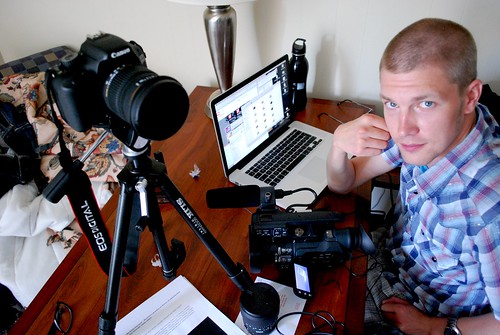As part of a project I am working on at the moment I am thinking carefully about how it might benefit from crowdsourcing the content for the site. I can't talk too much about the project right now, but I can share my discoveries about crowdsourcing so far. As I mentioned in a previous post I recently read the book by Jeff Howe, and in a previous post I had found a few key motivators to crowdsourcing on the web. Jeff, kindly puts a summary at the end of his book that extends this list, with the following observations that he made on crowsourcing and what makes it work. His key discoveries for successful crowdsourcing include:
Picking the right model.
As outlined in his book, which I don't plan to repeat fully here I suggest you buy and read it yourself, he talks about the different models of crowdsourcing that exist, including crowd creation, collective intelligence and crowd voting. Each of these has different goals and needs from the crowd, and some projects require one of these approaches and some require all three.
Pick the Right Crowd.
Picking the right group of minds to tap into is of course important to any endeavor as you want to have the product of their efforts to be inline with your needs and goals.
Offer the right incentives.
offering the right incentives of course falls inline with the right crowd and right model. Some crowds are inspired and work to impress peers and some work to make money, each crowd can be motivated by different things, so it is important to know what motivates your crowd, and allow those motivations to shine and work in your site.
Don't assume the crowd is your new workforce.
It seems that it is easy to fall into the mindset that crowdsourcing is going to save you time and effort and reduce the need for fulltime employees. But as Jeff explains, often the content they produce needs guidance, and filtering, by someone professional in the area of the crowds domain. Crowds also don't always show loyality if they feel cheated and any attempt to think of them as substitute works will back fire.
Dumbness of crowds or the benevolent dictator
This is an extension of the previous principle, crowds are not always very good at self organizing and often need guidance from a guide, or principle that helps focus the crowds efforts.
Keep it simple
The way to think about crowds is to see them as many different people with many different skills and more importantly with various amounts of time available to work on their projects. So as such breaking problems or tasks that are of different sizes ideally smaller the better, is more likely to yield results. Those that have an hour to spare can use it, and those that have 5 mins can also take part in the collaborative efforts.
Sturgeons Law
This is simply that most of the content(+90%) that people of such varing degrees of ability will produce will be less than satisfactory. But 10% will be amazing and above average. The task of course is to get as many people invloved as possible to increase the amount of great work produced.
10% Rule to aid Sturgeons Law
Allow the crowd to sort through the content themselves voting the best up to the top and allowing the bad items to fall to the bottom of the fish tank. The 10% concept comes from the view, of Bradley Horowitz that approximately 1% of a crowd produces something, 10% votes and comments on it and 90% will just consume it. So the 10% is a valuable asset to getting the best of the crowd.
The community is always right.
This simply suggests that the community can be guided, but in the end you are a follower to the crowds wants and desires. After all, if the community feels ignored or pushed, then they will just leave for something else.
Ask what you can do for the crowd.
It is important for crowd to be considered as individual people, they are going to have needs, wants and desires. Your job as a crowdsorcerer is to put in place those things that address the crowds Maslow needs, if you want to really see success then work with the community you create.
So there you have it a nice summary of some considerations for crowdsourcing efforts. I have already begun to rethink how my project might benefit from some of this advice. Time will tell how successful it becomes.






